Did you know? The Buying Green Report 2023 shows that 59% of consumers prioritize recyclability and sustainability when buying products. In fact, as per a study by IBM, more than 50% of consumers are willing to pay extra for sustainable goods.
These stats aren’t just numbers but proof that mere feel-good greenwashing won’t work anymore. The consumer mindset is changing, and companies must adapt to it.
This paradigm shift is why we have tried to summarize the packaging designs trending in 2024.
In this article, you’ll read:
- Which trends in sustainable packaging are making waves in the market?
- Examples of environmentally friendly packaging solutions
- Practical tips on how you can do the same for your own design
So let’s dive in!
Table of Contents
Top 5 Sustainable Packaging Trends of 2024
In 2024, consumers will be big on eco-friendly choices 71% of Americans consider the environment when they shop.
With this change in focus, packaging designs are witnessing the following significant changes:
- Packaging designs are now focussed more towards minimalism. The packages are made smaller and more efficient. This involves using less material and reducing CO2 emissions during shipping.
- Companies are exploring refillable containers and deposit schemes.
- There is a growing preference for materials that decompose naturally and minimize landfill waste.
- Plant-based plastics and packaging derived from agricultural waste are another big wave. The use of materials like leaves, bamboo, sugarcane, etc., is becoming more prevalent.
A few standard approaches and trends in sustainable packaging are driving these changes. These approaches are discussed next.
1. The “Less Is More” Approach
We have all heard the saying “less is more” in branding artwork. But how can this be applied to design sustainable packaging?
Concept:
The trend focuses on minimizing the amount of material used in packaging. However, you must still protect the product during transport and storage. You can do this by following the “right size packaging principle.” This principle basically means finding a balance between utility and protection.
The signs of right-size packaging are evident as soon as you open them. They feel balanced properly, with no extra weight or unnecessary space.
This approach has been gaining a lot of momentum recently. Take IKEA’s Ektorp Sofa, for example:
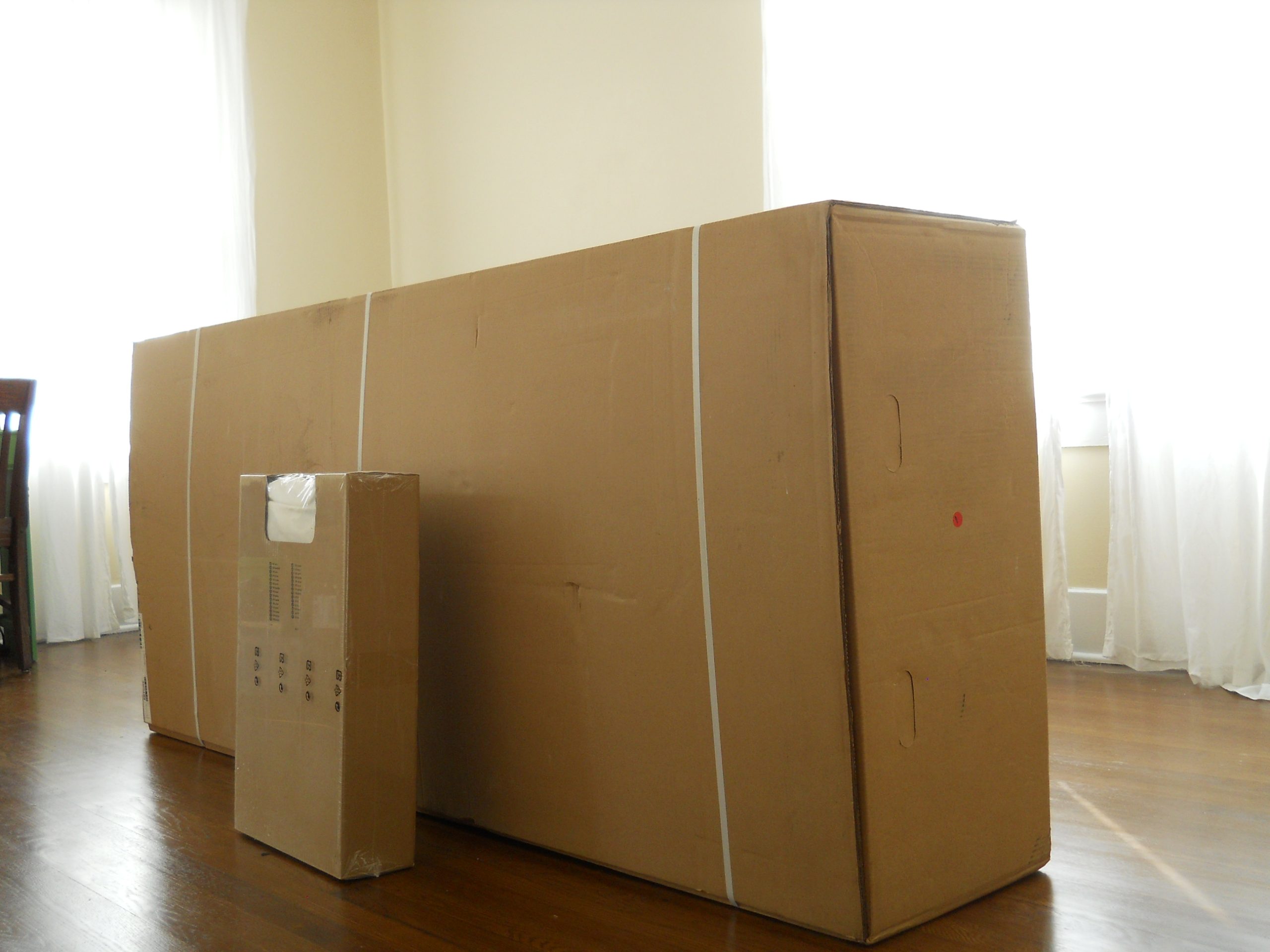
When you have to ship a whole sofa, the biggest issue is its size and the extra space it wastes due to its structure. For IKEA’s Ektorp sofa, their engineers worked out that instead of shipping it as one piece, they could break it down and ship it as parts. This helped them use the space better and reduce the packaging size by 50%.
The result for IKEA was an annual savings of €1.2 million and 7,477 fewer trucks on the road yearly.
Actionable Tips for Using Right-size Packaging
- Start by auditing your current packaging and find out how much material is used. Then, try to identify areas for reduction.
- Try testing your product’s packaging under real-world scenarios to check how well it handles the damage.
- When you design your package, prioritize functionality over aesthetics.
2. The Circular Economy Approach
The circular economy moves beyond traditional linear models (take-make-dispose). It aims to keep products and materials in use for as long as possible. This approach heavily emphasises resource recovery and minimising waste. Let’s understand how this works in packaging design:
Concept
You can apply this by designing packaging for multiple lifecycles and closing the loop on material use. This involves designing packaging for:
- Durability and reusability to extend the packaging’s lifespan.
- Recyclability or composting to recover materials for new products at the end of their useful life.
- Disassembly for efficient recycling.
This approach reduces reliance on virgin resources. By prioritizing material reuse, we can reduce environmental harm and build a more sustainable production system.
The company Loop is one of the well known examples of this approach.
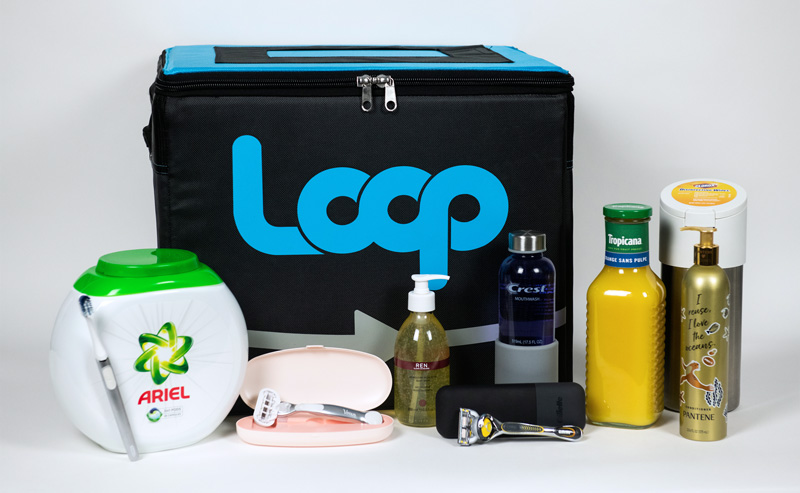
Loop, a subsidiary of TerraCycle, is changing the entire way we look at the packaging industry with its focus on the circular economy. Loop partners with brands like Unilever, Procter & Gamble, and Nestlé and packages their products into reusable containers.
Their focus is on these daily-use items generally sold in single-use containers. By replacing them with reusable containers, Loop is trying its best to reduce waste at the same time.
Actionable Tips for Adopting the Circular Economy Approach
- Audit your current packaging, focusing on thinking beyond the initial use. Can the packaging be reused for storage or repurposed by consumers? This will help you identify opportunities for reusability, recyclability, or composting.
- Select materials that can be easily decomposed in your region.
- Explore bio-based or recycled content options.
Also read: The Complete Guide to CPG Packaging Design Process
3. Reusable and Refillable Packages
Instead of producing packages meant to be “use and throw,” you can try making them reusable or refillable.
Concept:
As the name suggests, reusable packaging means the packages have a purpose beyond protecting the product inside. It minimizes waste generation and can also serve a purpose rather than being thrown away.
Refillable products or packaging, on the other hand, can be used again and again for the same product. The material used for this is sturdy and can withstand a lot of wear and tear.
Refillable packaging systems are also gaining a lot of traction. The global market for reusable and refillable packaging grow over $7 billion to 2029.
Dove’s new packaging for its deo-stick exemplifies this trend. Have a look:
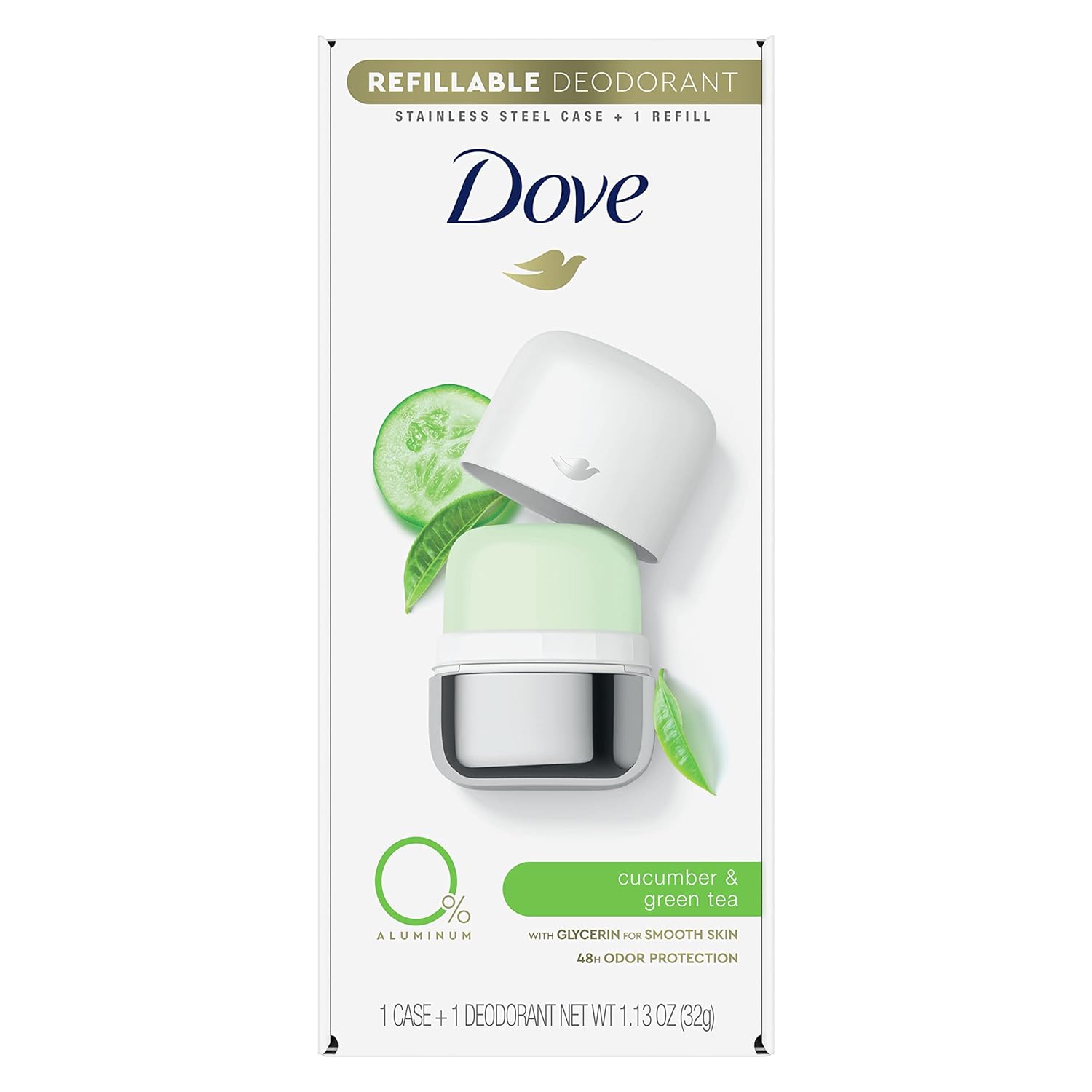
Dove introduced their new line of refillable deo-sticks to reduce the plastic waste generated. According to Dove, the packaging’s outer layer is made up of 96% recycled plastic and is 100% recyclable. Its inner case is made of stainless steel to keep it further aligned with its sustainability goals.
Actionable Tips to Design a Reusable or Refillable Package
- Reusable or refillable packages are best for liquids, creams, powders, etc. Basically all those products that have long shelf lives and can be used multiple times.
- Opt for materials that withstand multiple refills, use, cleaning, and transport cycles, such as stainless steel, glass, or thick, reusable plastic.
- Ensure the package’s sealing is secure enough to prevent spills. It should also be able to prevent contamination during use and transportation.
- Consider mess-free dispensing mechanisms or easy-to-clean components.
- Consider using a pressure-sensitive label built to last far longer than labels on single-use plastics. Since these containers will be used repeatedly, it is vital to have the information and warnings secured on the product itself.
4. Bio-based or Compostable Packaging
One of the most common strategies in the current sustainable packaging trends is compostable materials. Consumers easily spot these materials, which helps spread the product’s overall “green” feel. So, what is the theory behind it?
Concept:
Compostable packaging was developed because of the inability of single-use plastics. Unlike traditional plastics, these materials naturally decompose as they are made from biodegradable resources such as bamboo, mushrooms, seaweed, etc.
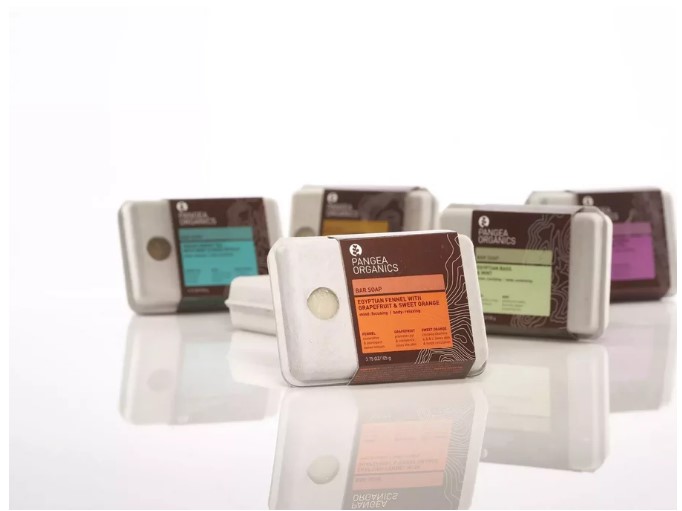
The product image attached above is of Pangea. Pangea is a beauty brand that sells face, body, and lip care products wrapped in sugarcane bio-resin material.
This beauty brand was the first in the world to use sugarcane bio-resin. A switch to bio-based materials like such is not only recyclable but also compostable. Another plus point is that it decreases carbon footprint.
Actionable tips for using bio-based or compostable materials:
- Some of the widely used bio-based materials that you can consider for your brand are:
- Seaweed
- Algae
- Starch blends
- Bio-based foams
- Paper nano cellulose
- Food waste byproducts: Upcycled materials like orange peels, coffee grounds, or even eggshells
- Begin by researching various bio-based material properties to fit your product’s needs. For better understanding, you could consider factors like strength, moisture barrier, and shelf life.
- Choose packaging made from a single material or with components that can be easily separated. This makes the compostability easier.
- Avoid using intricate laminates or multiple materials that slow the breakdown process.
- Bio-based materials require slightly different thicknesses than traditional plastics. To get the desired strength, try experimenting with real-world stress tests to find the perfect balance for your product.
- Bio-based materials are typically more susceptible to moisture or grease absorption. To be safe, try incorporating moisture barriers or grease-resistant coatings.
5. Recyclability of the Packaging
Recycling is one of the primary steps towards a circular economy. This circular model pushes us to develop new and better ways to design more easily recycled products. Ultimately, it’s all about ensuring we don’t waste resources and reduce the waste we create.
Concept:
A recyclable package can be broken down and remanufactured. This can be done on the consumer’s end, where they can use the packaging for personal use. For example, PET bottles of beverages or soft drinks.
Or, it can be done from the manufacturer’s side, where they use recycled material for production. This process can involve collection, sorting, cleaning, and reprocessing the materials.
One of the best companies on this front is Kellogg’s. Have a look:
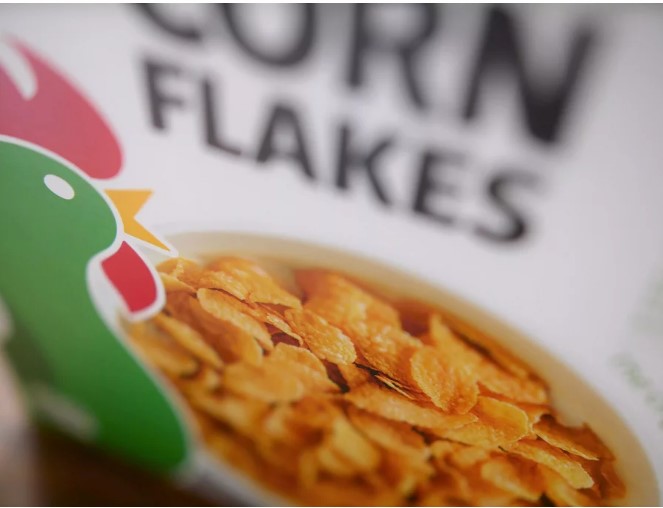
Among food companies, Kellogg’s has one of the smallest plastic footprints. It currently uses recycled cardboard, and 76% of its packaging is recyclable. Kellogg’s aims to make 100% of packaging recyclable or compostable by 2025.
Actionable Tips to Design Recyclable Packaging:
- Amongst all the materials available, the following are the most recycled ones:
- Paper and cardboard: Opt for corrugated cardboard for added strength.
- Metal: Aluminum cans, steel containers, and tin cans are most common
- Glass: Color sorting of glass might be required in some regions. Check local recycling guidelines.
- Plastic: Certain plastic resins (identified by recycling symbols) are recyclable. PET (#1) for plastic bottles, HDPE (#2) for some containers, and PP (#5) for some tubs are common examples. Local facilities might not accept all types, so check beforehand.
- Design labels so they don’t hinder material separation during recycling. You might want to consider using water-based adhesives for easier separation.
- Mark your packaging with the recycling symbol and relevant icons. This helps consumers understand the proper disposal method to use.
Also read: Food Packaging: 10 Best Practices for Review & Approval Workflow
What’s next?
As laws and consumer awareness keep increasing, we hope to see better solutions in the future. Here are some potential areas of growth:
- Research into next-generation bioplastics with improved performance and biodegradability is ongoing. These studies could help innovate bioplastics that are suitable for a broader range of products.
- With the rise of awareness, the laws could make it compulsory to have a standardized labeling system. This might mean including a universal logo for recycling, composting, etc.
- Deposit schemes and refillable packaging systems will likely become more widespread.
The change for a better tomorrow has started. So, don’t wait to start working on your brand’s sustainability goals.
Ready to design packaging that’s as good for your brand as it is for the planet? GoVisually can help you to create sustainable packaging trends that stand out. You can use it to upload designs, share ideas, and provide feedback. It’s an all-in-one centralized design and approval platform. So why wait? Get started today!




